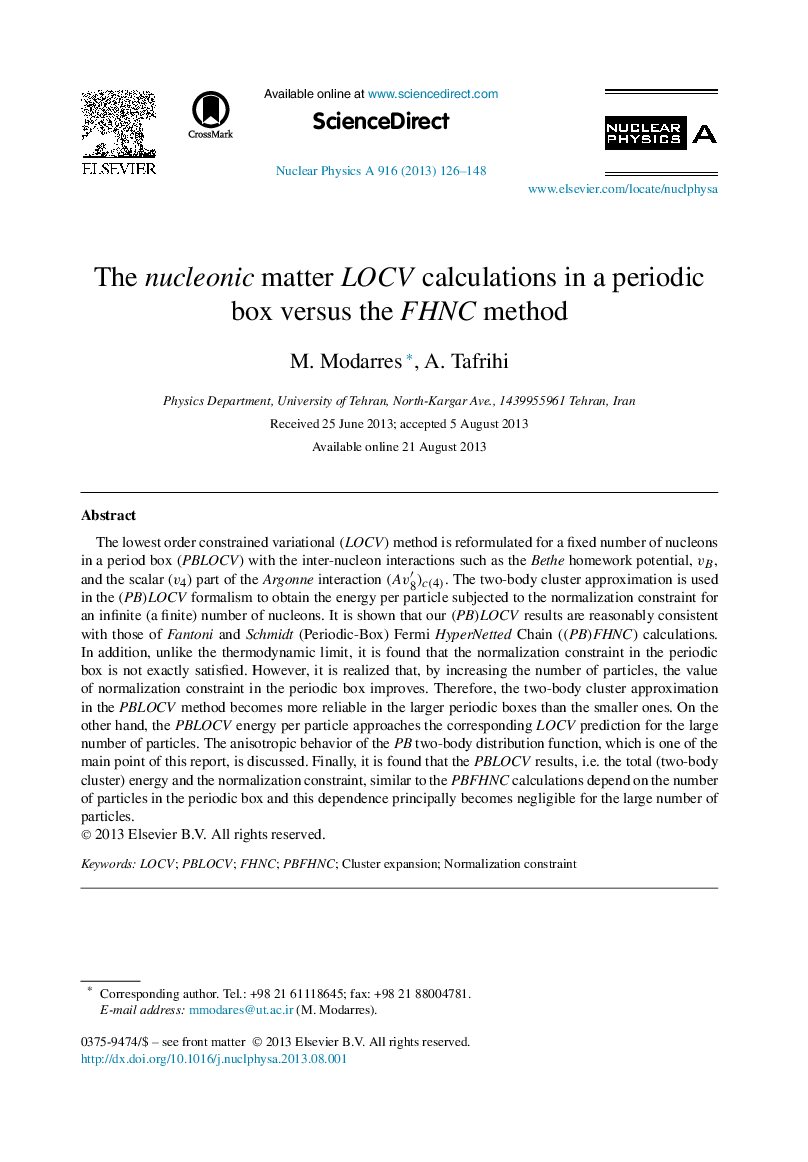| Article ID | Journal | Published Year | Pages | File Type |
|---|---|---|---|---|
| 1836139 | Nuclear Physics A | 2013 | 23 Pages |
The lowest order constrained variational (LOCV) method is reformulated for a fixed number of nucleons in a period box (PBLOCV) with the inter-nucleon interactions such as the Bethe homework potential, vBvB, and the scalar (v4v4) part of the Argonne interaction (Av8′)c(4). The two-body cluster approximation is used in the (PB)LOCV(PB)LOCV formalism to obtain the energy per particle subjected to the normalization constraint for an infinite (a finite) number of nucleons. It is shown that our (PB)LOCV(PB)LOCV results are reasonably consistent with those of Fantoni and Schmidt (Periodic-Box) Fermi HyperNetted Chain ((PB)FHNC(PB)FHNC) calculations. In addition, unlike the thermodynamic limit, it is found that the normalization constraint in the periodic box is not exactly satisfied. However, it is realized that, by increasing the number of particles, the value of normalization constraint in the periodic box improves. Therefore, the two-body cluster approximation in the PBLOCV method becomes more reliable in the larger periodic boxes than the smaller ones. On the other hand, the PBLOCV energy per particle approaches the corresponding LOCV prediction for the large number of particles. The anisotropic behavior of the PB two-body distribution function, which is one of the main point of this report, is discussed. Finally, it is found that the PBLOCV results, i.e. the total (two-body cluster) energy and the normalization constraint, similar to the PBFHNC calculations depend on the number of particles in the periodic box and this dependence principally becomes negligible for the large number of particles.
